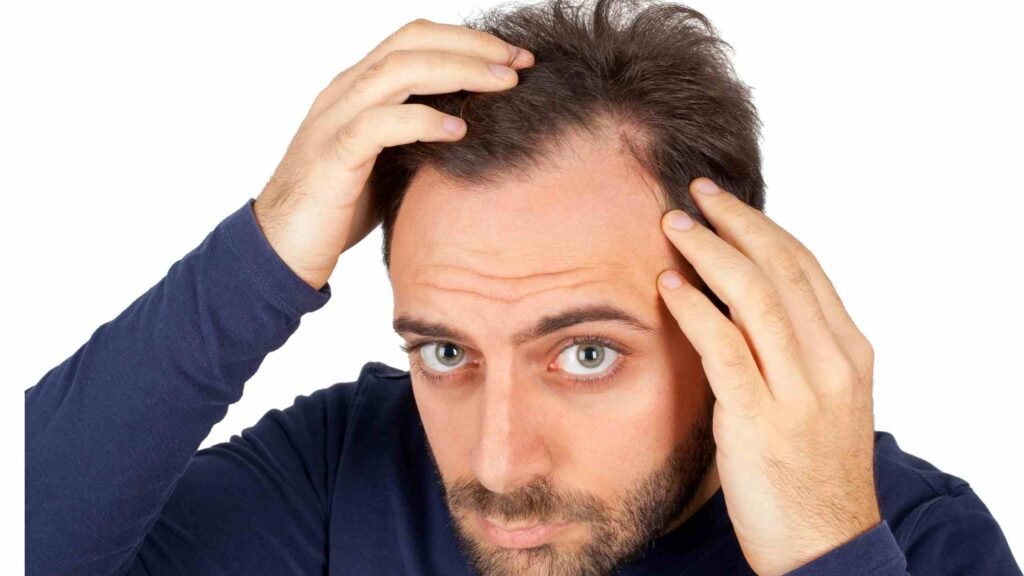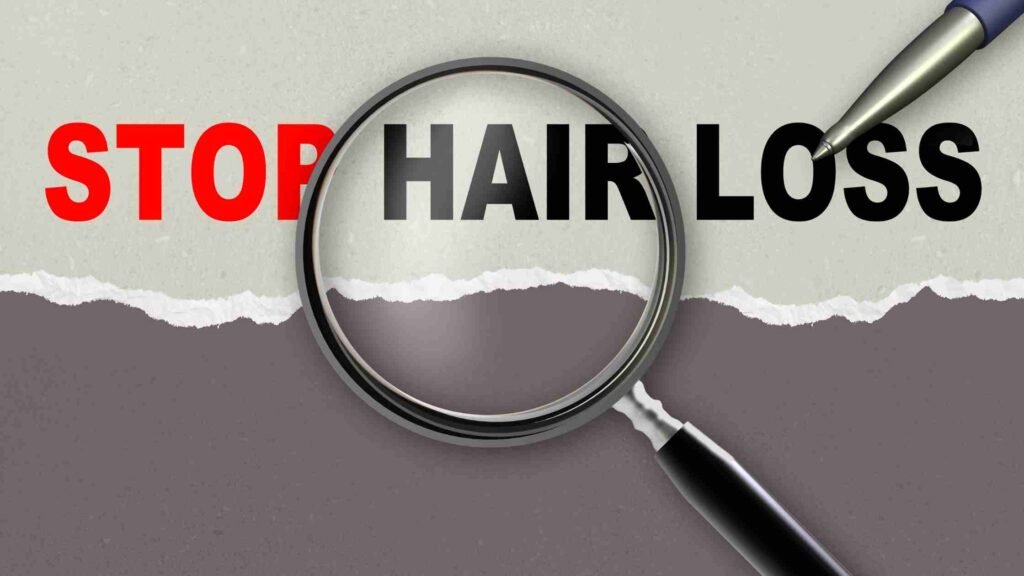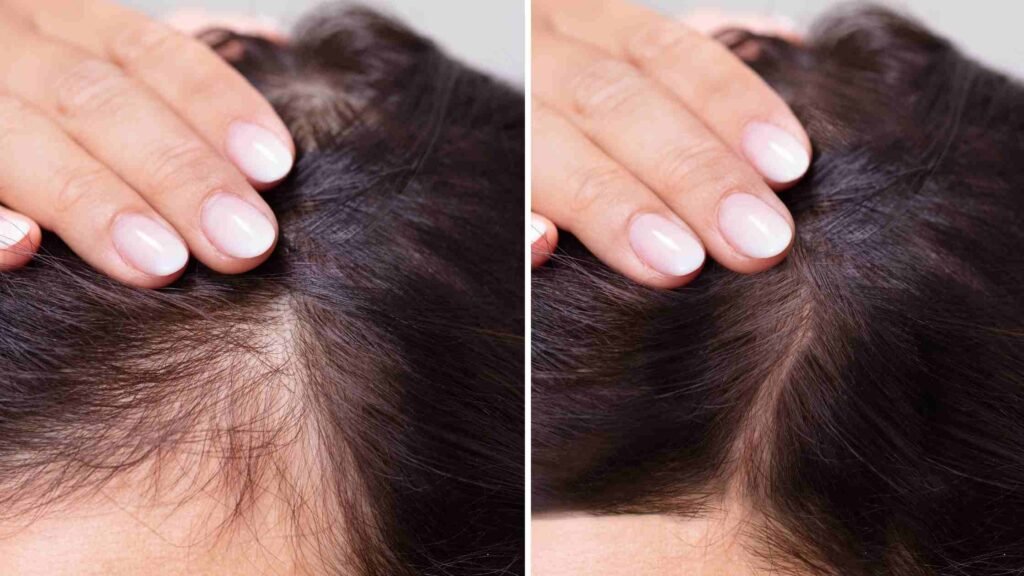Teenage is the most crucial phase of life. While in teenage every human explores the world and life differently with new emotions and accumulating new experiences, there is one more challenge some teenagers face- hair loss.
All of us experience some degree of hair loss throughout our lives. But while most of us encounter the most disturbing reality of losing her during adulthood, some people start losing their hair as teenagers. And no matter what age you are, it is hard to accept.
Losing hair has a massive impact on self-esteem. And when we are younger, it is even more difficult. It is heart-wrenching to see our hairs falling out gradually or abruptly, thinning of hair, and sometimes no regrowth of those hairs.

Though after hair loss or simultaneously to hair loss, hair regrows. But teenagers with some genetic factors, hormonal imbalances, and underlying medical conditions might face a certain amount of hair loss that cannot be reversible without proper treatment.
But the good news is that in most cases, hair loss can be controlled with proper treatment modules, and there is a wide range of potential treatment options for each type of hair loss.
In this article, we will discuss all the potential causes of hair loss in teenagers and how to treat them.
Read more about Male Pattern Baldness- What Is It? How to Treat Male Pattern Baldness?
What Are The Causes Of Teenage Hair Loss?
While talking about hair loss during teenage, we are entirely gender neutral since hair loss can happen to anyone, whether male or female. Though some hair loss is seen in males, females can also accumulate other types of hair loss. Let’s now talk about the potential causes of hair loss in teenagers.

Genetics
The most common genetic form of hair loss is known as androgenic alopecia. It is also known as male/female pattern baldness. The mention of the term “pattern” implies that this type of hair loss occurs in a predictable pattern.
In males, this hair loss appears as a recession of the hairline in the M, U, or V shape, and gradually it works its way to the crown of the head, causing balding. In women, gradually thinning of hair can be noticed along the part of their hair.
Read more about PRP Hair Loss Treatment in Hyderabad
Generally, pattern hair loss is a problem faced during adulthood between 20 to 50. But in some teenagers, it can start early. The growing number of teenagers suffering from this type of hair loss is not uncommon but prevalent.
If someone in your family has developed this hair loss, you are most likely to develop pattern hair loss.
There is a considerable history of research behind finding some other causes of male and female pattern baldness alongside being a genetic disorder. It is found that pattern baldness is associated with sex hormones as those hormones have many functions, including regulating hair growth.
Every hair has its growth cycle; in male and female baldness, the growth cycle begins to weaken, and the hair follicles shrink, producing shorter and more delicate strands of hair. And when this happens, again and again, the growth cycle of each hair gradually ends, and no hair regrowth takes place.
If hair loss is inherited, it has no side effects. But it is necessary to see a doctor to diagnose whether it is male pattern baldness or female pattern baldness.
A person suffering from male and female pattern baldness may experience some other symptoms alongside hair loss, such as redness, pain rash, and peeling of the scalp alongside hair breakage or unusual pattern of hair loss.

Read more about What Is Scalp Folliculitis- Symptoms, Treatments, Prevention and More to Know.
Alopecia Areata
Alopecia areata is an immune disorder causing hair to fall out in patches. Sometimes the patches can be in size and shape of a quarter. However, the amount of hair loss in alopecia areata differs in different individuals. While some people might lose just a few spots, others may lose a lot. However, in many cases, it has been experienced that even after growing back, hairs fall out later when a person suffers from alopecia areata.
There are different types of alopecia areata, including:
- Alopecia Areata Totalis, in which a person’s hairs fall out completely.
- Diffuse Alopecia Areata is the condition when the hair starts thinning suddenly rather than losing in patches.
- Alopecia Areata Universalis, in which someone loses hair over the entire body.
- Ophiasis Alopecia Areata is when the hair falls out in a band shape around the side and back of the head.
When it is Alopecia Areata, a person might notice some symptoms, including:
- Small bald patches on the scalp or other parts of their bodies.
- Patches are getting larger in size and growing together into a bald spots.
- Even after regrowth, some hairs fall out. While at some cases, the hair grows back in one spot and falls out in another.
- Losing more than a few dozen of hair every day
- More hair loss during winter
- Toenails and fingernails become brittle and read
Read more about Minoxidil Topical Solution For Hair Loss & Its Uses, Side Effects
In Alopecia Areata, the bald patches on the skin are smooth and have no sign of rashes or redness. But the person might experience a tingling, burning, or itching sensation on their skin right before the hair falls out.
Diet Deficiency
Diet is an essential factor in our daily life. Therefore alongside screening the medical history of teenagers suffering from hair loss, their dietary history must be considered to examine for risk factors of nutrient deficiency. In many cases, it has been found that patients suffering from hair loss often don’t get enough nutrients. Many start dietary supplements without consultation in the hope that those supplements will help but instead suffer from adverse effects.
While good nutrients are necessary, taking nutritional supplements wrongly can make the body vulnerable. Hair follicles are the body’s most metabolically active component; therefore, hair regrowth can be impacted due to calorie and protein malnutrition and micronutrient deficiency.
Diet deficiency may also impact hair growth and the structure of the hair. One of the effects on hair regrowth can include acute telogen effluvium, a well-known effect of sudden weight loss or decreased protein intake. Another effect can be alopecia which occurs due to niacin deficiency.
Since there is a recognized link between diet and hair regrowth, many patients seeking treatment for hair loss are also asked to follow some dietary recommendations. Patients who suffer from excessive hair loss must test their nutrient deficiency.
Nowadays, supplement companies are marketing their products free from harmful components. But in reality, no supplements are without risk. Supplementation may also harm your hair if there is no deficiency in your body. Over supplementation of certain nutrients, including Vitamin A, Vitamin E, and selenium, can also cause hair loss.
Read more about PRP for Hair Loss: Does it Work, and Is It Safe?
Thyroid Conditions
Hypothyroidism and hyperthyroidism can both cause hair loss. If the thyroid condition in a teenager is severe and prolonged, the hair loss can involve the entire scalp instead of some areas. Hair growth and hair loss are both regulated through some hormones in our bodies. And abnormal hormone secretion can be blamed for the loss of scalp fair.
Hair loss is a part of everyday life; thyroid conditions in women can develop baldness to various degrees, which is mainly determined by genetic factors.
Thyroid conditions may lead to underproduction or overproduction of thyroid hormones and cause hair loss or brittle hair. If the hair loss is associated with a thyroid condition, the hair will usually appear uniformly thin across the scalp.
Polycystic Ovary Syndrome
Hair loss is one of the reported symptoms of polycystic ovary syndrome. In this condition, excessive androgenic hormones lead to acne, thinning hair, and even hair loss. This type of hair loss is referred to as female pattern baldness, and treating such a condition can be tricky.
We previously discussed that hormonal imbalance could lead to androgenic alopecia, in which hair falls out mainly in the frontal and parietal areas of the head. PCOS hair loss leads to shedding more hair daily. Therefore someone suffering from PCOS hair loss might find hairs on clothes, pillowcases, and furniture. They may also notice their hairs coming out in clumps in the shower.
Read more about How to Treat Temple Hair Loss
In PCOS hair loss, the hair falls out from the root, which means the entire hair, including the follicle, comes out. But in some patients, the hair fall can also occur as breakage since PCOS patients generally have dryer hair that is more prone to damage from brushing and heat.
Hair loss caused by polycystic ovary syndrome may make the scalp more visible, particularly at the headline and the crown. The hair might also appear frizzy and result in hair breakage.
Alongside hair loss, the patient might also experience an itchy and dry scalp, and some patients with PCOS have also reported build-up and dandruff.
Lupus
Lupus is another condition that causes inflammation on the skin, particularly on the face and scalp. Lupus can cause the hair to thin out gradually, although a few people can lose clumps of her. Losing a beard, body hair, eyelashes, and eyebrows is possible due to lupus. Lupus is another autoimmune disease that causes joint pain, joint stiffness, fatigue, and some specifically shaped rashes on the face.
But not everyone with lupus suffers from hair loss. But most people with this condition notice that their hair gradually thins and breaks along their hairlines. There are generally two types of hair loss involved in lupus, according to the research-scarring and non-scarring.
Hair Styling, Treatment, And Coloring
Hair styling is nowadays very common, even among teenagers. Though those treatments make the hair aesthetically appealing, they damage it and potentially lead to increased hair fall and breakage. Those treatments don’t usually affect the hair roots but cause hair fall that is likely to grow back once those treatments are stopped.
Also, people who swim may experience excessive hair fall due to chlorine in swimming pools. Bleaching and exposing hair to excessive heat can also be the potential causes of hair damage.
Read more about Best Non-Surgical Treatments for Hair Loss
How Is The Type Of Hair Loss Diagnosed In Teenagers?
We have already discussed that different types of hair loss occur in teenagers. Though it is quite natural to lose 50 to 100 hairs every day, when the amount goes beyond that, it is necessary to see a doctor diagnose the real cause of the hair loss with a physical examination and by examining the medical history of the patient. The doctor might perform a pull test to see how many hairs come out and examine the scalp with a microscope.
If the doctor suspects the cause of the hair fall is a hormonal imbalance or nutrient deficiency, they may also ask the patient to run a blood test or take a small scalp biopsy.
What Are The Best Treatment Modules For Hair Loss In Teenagers?
The best treatment options for hair loss in teenagers depend upon the cause. In some cases, the hair loss may be reversible naturally, but if it is not, there are different treatments available, including:
Corticosteroid Injections:
Several children have experienced alopecia areata during puberty and teenage years, which makes their families pretty worried about ongoing hair loss and also makes them randomly try different natural health products that prove to be inefficient soon.
Corticosteroids must be considered to treat the condition. Alopecia areata can be a source of considerable distress to the sufferer. And although there are many treatment options available, none has been clinically proven to be consistently effective. Corticosteroid injections, on the other hand, are prescribed by dermatologists or trichologists that can result in hair regrowth.
Doctors generally suggest taking oral, intralesional, and intravenous steroids to a teenager suffering from excessive hair fall or alopecia areata. There have been many trials, especially in teenagers, to document the long-term efficacy of corticosteroid injections alone and alongside other treatment modules. Corticosteroids are generally injected directly into lesions; topical corticosteroids have also proven effective.
In 2012 the British Association Of Dermatologists claimed that children could be treated similarly to adults. However that doses in children must be controlled to reduce the side effects.
Oral Medications:
- Minoxidil is an FDA-approved drug suggested for teenagers dealing with excessive hair loss. The medicine increases hair regrowth and generally comes in a foam or liquid form with specific guidelines. Everyone must adhere to the directions as the medicine involves specific side effects like unwanted hair growth. Teenage boys and girls can use this medication prescribed by a doctor.
- Finasteride is another FDA-approved drug for teenagers that helps by slowing hair loss. The dosage and the direction for use must be considered in teenagers to avoid side effects. However, it is approved for boys above 18 years. But women, irrespective of age, cannot use this drug.
Laser Treatment:
Laser therapy is an advanced hair fall treatment for teenagers with alopecia areata or excessive hair fall. A study they have shown that low-level laser therapy can stimulate hair growth since it was found in clinical trials in both men and women. Red and near-infrared laser light is used to promote tissue repair and regeneration, and low-intensity light, commonly known as low-level laser therapy, is also known to stimulate cellular activity.
After the invention of laser therapy in the late 1960s series of experiments proved that using a low-power ruby laser can improve hair growth. Recently low-level laser therapy has achieved enormous attention for increasing hair density even around sites treated for hair removal. From 2007 to 2011, the FDA popularly approved a laser comb as a safe treatment for meal and female pattern hair loss.
Some trichologists also combine low-level laser therapy with minoxidil to promote hair growth faster.
Platelet-Rich Plasma Therapy
Platelet-rich plasma therapy is an effective treatment modality for treating male pattern baldness. In this treatment, the patient’s blood is collected, centrifugated, and again injected to reverse hair loss and grow new hair. Often this treatment is associated with genetic hair loss problems, as mentioned, male pattern baldness. But this treatment is increasingly popular in many other types of hair loss.
In platelet-rich plasma therapy, platelet-rich plasma injections are injected with higher levels of platelets than normal blood. A patient might need several injections and return once a month for at least 4 to 6 months to achieve desired results.
Dietary Changes:
Hair loss is often not permanent since nutrition plays a vital role in the hair’s health and needs regrowth. Teenagers suffering from excessive hair loss first need to check whether they are eating a healthy and varied diet, including sources of antioxidants, biotin, iron, Vitamin D, etc., that promote hair health.
Some necessary blood tests could be enough to identify the lack of nutrients, and one must follow a versatile diet to reduce the amount of hair loss and promote hair growth. The best five food for hair loss include:
Fatty fish: Mackerel and salmon are rich in omega-3 fatty acids, Vitamin D, protein, Vitamin B, and selenium. All those nutrients help in promoting healthy hair, according to an article published in Dermatology Practical And Conceptual.
Eggs: Eggs are a natural source of multivitamins because they contain various minerals, nutrients, and vitamins, including protein, selenium, zinc, and biotin. Teenagers must eat eggs regularly to achieve those nutrients for hair, skin, and nail health. Since a deficiency of biotin is linked to hair loss, eating eggs regularly can help increase the level of biotin. But eating eggs without the yolk may cause biotin deficiency.
Leafy vegetables: Green leafy vegetables are full of nutrients and can prevent hair loss. Some good choices are spinach and kale. Those vegetables contain Vitamin A, carotene, Vitamin C, iron, and folate.
Fruits: Berries, apricots, grapes, oranges, and cherries are essential for healthy hair since they include antioxidants and Vitamin C. Those fruits also protect the hair follicles from free radicals and promote collagen production in the body.
Nuts and seeds: Nutrient-dense foods such as walnuts, almonds, chia seeds, flax seeds, and Brazil nuts can prevent hair loss by containing Vitamin E, selenium, zinc, and omega-3 fatty acids.
Conclusion
Coping with hair loss at a young age may sound complicated, but it is not impossible. Being young does not mean that your head has to have countless hairs; nowadays, hair loss is a common problem among younger people. One of the best ways to cope with the change until you are getting benefited from the treatment mentioned above; you can opt to change your hairstyles to draw the attention away from the fact that you have fewer strands. This technique can work well for both men and women. But it is always beneficial to accept the way you are. But many people often buy wigs that can bring them fun and exciting change in their overall appearance. Remember, every treatment modality will take some time to work. And one must be patient and happy to get the most out of those treatments. Last but not least, stop stressing. Stress is another contributing factor to hair loss.
I hope this article helped you know the causes of hair loss in teenagers in the best possible treatment modalities that can help you regain your hair. Keep following us for many such articles, and medically educate yourself to make better and informed decisions.
